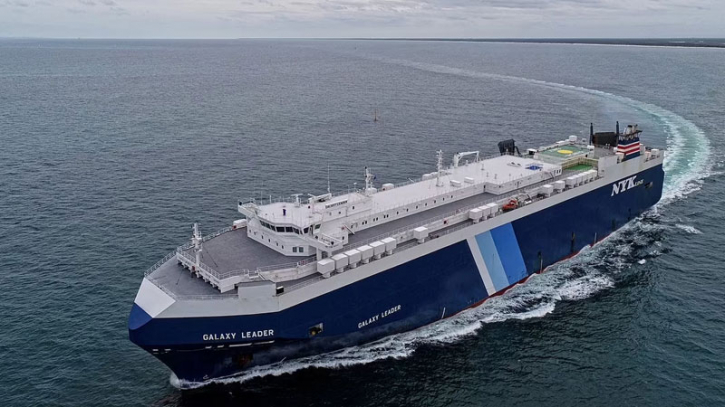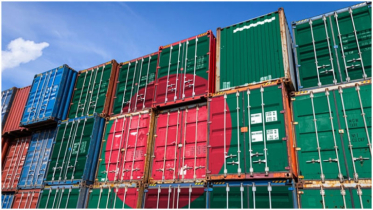Red sea crisis is tightening oil markets

Disruptions to shipping in the Red Sea and via the Suez Canal following the Houthi attacks are raising the prices of African and U.S. crude grades and expanding the backwardation in the global Brent crude benchmark, signaling tightening markets and a run-up in diesel prices in Europe.
Europe, which has been left exposed to more crude and fuel supplies from the Middle East and Asia since the embargoes on Russian petroleum took effect early 2023, now finds itself looking for deliveries from nearby exporters. Growing volumes of petroleum products are now bypassing the Suez Canal – the shortest route from Asia and the Middle East to Europe – and are heading on the longer route via the Cape of Good Hope in Africa, which delays planned deliveries and raises shipping costs.
As a result, Europe is buying more U.S. and West African crude. Increased appetite for the so-called Atlantic barrels in Europe is driving the price of Nigerian and U.S. crude grades and is steepening the backwardation in Brent Crude futures, traders tell Bloomberg.
Backwardation typically occurs at times of market deficit, and in it, prices for front-month contracts are higher than the ones further out in time. The deeper backwardation curve suggests the market is tightening, analysts say, noting that the supplies may be tighter than market sentiment and price action in oil imply.
Analysts expect drawdowns in global stocks this month and next to support oil prices. But they are unsure how long the tightness could persist, as factors including spring refinery maintenance, concerns about demand, and the upcoming OPEC+ decision on extending the cuts – or not – could all upend the current market supply-demand balances.
Higher Atlantic basin crude prices
As Europe is looking to purchase crude that would travel shorter and safer delivery routes, the prices of Egina and Forcados, key Nigerian grades, have risen in recent weeks. The two West African crudes are now being offered at higher premiums to Dated Brent compared to the premiums from a month ago, according to Bloomberg's estimates.
U.S. grade WTI Midland is also in high demand in Europe, and the crude price has increased compared to the North Sea benchmark in recent weeks.
According to Bloomberg's trading sources, French supermajor TotalEnergies has been bidding nearly every day for WTI Midland supply in a pricing window since the beginning of February.
Diesel tightness
Diesel supply is also tight in Europe, partly due to the Red Sea shipping disruptions and lower European refining capacity with some refinery closures and refinery maintenance in the spring.
The premium of diesel over crude has surged in recent days to the highest level for this time of year in more than a decade—since 2012.
Due to the Red Sea disruption of flows to Europe and spring refinery maintenance, "We expect to see a fall in northwest Europe diesel/gasoil stocks over the next two months," Wood Mackenzie analyst Emma Howsham told Bloomberg.
Diesel prices in Europe started rallying last month amid tightening supply due to Red Sea shipping disruptions, threatening to test the resilience of European economies that have narrowly avoided recessions in recent months.
"The European middle distillate market has been plagued by tightness since Russia's invasion of Ukraine, which has resulted in drastic shifts in energy flows with the EU banning Russian crude oil and refined products. This has left Europe more dependent on Asia and the Middle East for flows, and these flows are being affected by the Houthi attacks in the Red Sea," ING strategists Warren Patterson and Ewa Manthey wrote in a note on Tuesday.
Middle distillates, including diesel, are likely to remain well supported in the short term as refineries go into maintenance season, they added.
Tighter Crude Oil Market
The prompt Brent time spread weakened on Monday, but the trend this year "has been for the spread to move into deeper backwardation, suggesting that the market is tightening," ING's strategists said.
The oil market will see marginal tightening with a relatively small deficit this quarter, but this could flip into a surplus in the second quarter if OPEC+ fails to roll over part of its cuts beyond Q1, according to ING.
Saxo Bank expects Brent and WTI to remain range-bound in the first quarter at around $80 and $75 a barrel, respectively.
However, "disruption risks, OPEC+ production restraint, a tightening product market and incoming rate cuts potentially leaving the risk/reward skewed slightly to the upside," Saxo Bank's Head of Commodity Strategy, Ole Hansen, said at the end of last week.
Distillate supplies have been disrupted by lower supply from Russia amid Ukrainian attacks on Russian refinery infrastructure and Houthi attacks on vessels in the Red Sea and the Gulf of Aden, Hansen noted.
In crude markets, global supply is showing signs of tightness as total exports dropped in January compared to December by the largest amount since August 2023, while global onshore inventories continued to fall, according to Vortexa.
Excluding Iran and Venezuela, total crude and condensate exports fell month-on-month by more than 700,000 barrels per day (bpd) in January, marking a steep decline after a brief uptick in December, Jay Maroo, Head of Market Intelligence & Analysis (MENA) at Vortexa, wrote in an analysis last week.
Significant drawing of inventories is still taking place, suggesting that "wider macroeconomic concerns, and its impact on demand, is being outstripped by tighter prompt availability," Maroo noted.
"Looking ahead, given market expectations that OPEC+ production will remain constrained, the near-term outlook for crude prices could be more supportive than current sentiment suggests, even with strong signs of weakening global product demand."
.png)




